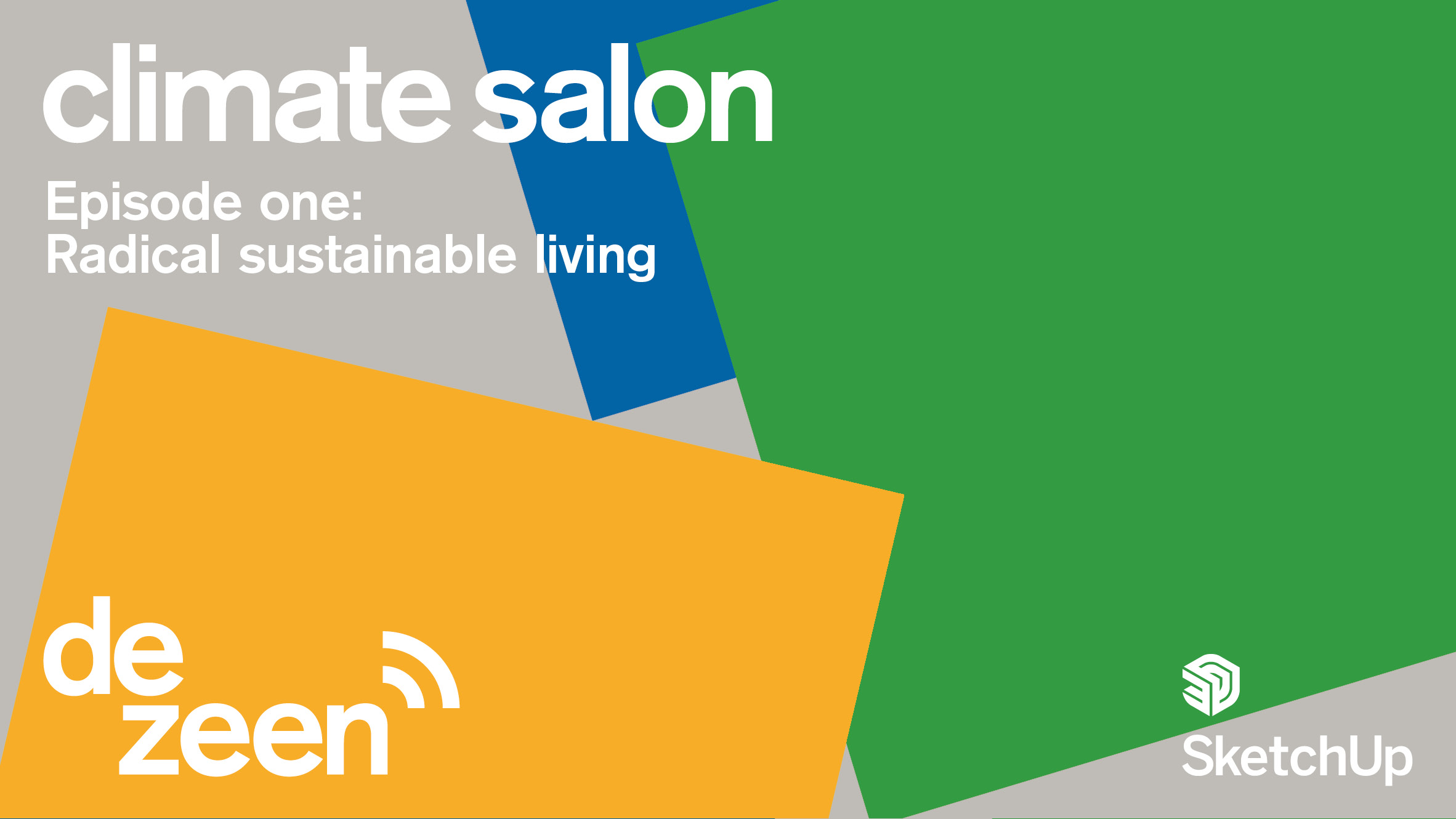Radical Sustainable Living: Climate Salon Podcast episode one recap
Trimble SketchUp partnered with Dezeen to create a podcast series that explores the future of sustainable architecture and design. In episode one, SketchUp's Sumele Adelana joins a panel of experts to discuss possible steps for creating a more sustainable environment with the help of AEC professionals.
Trimble SketchUp and Dezeen partnered up to bring you the Climate Salon Podcast. We’ll walk through the highlights and thought-provoking discussion from the inaugural episode, Radical Sustainable Living. Industry experts Tom Dixon, Siv Helene Strangeland, and Sumele Adelana share valuable insights and possible steps and solutions for creating a more sustainable environment with the help of architects, designers, engineers, contractors, and consumers. Our best hope is for professionals and consumers to foster a collective responsibility to create a greener future and address the urgency of the sustainability crisis.
Understanding the issue
We start the episode with a stark realization:
"Buildings and construction are singularly responsible for around 40% of all of our energy-related emissions at the moment."
Jennifer Hahn
This alarming statistic underscores the urgent need for architects, designers, and engineers to come together to reduce the industry's carbon footprint. Professionals in the field must embrace sustainability as a guiding principle and embed it into their daily practice.
Collaboration and government support
“There is a lot of work that needs to be done to push a collective effort.”
Sumele Adelana
Sumele Adelana, architectural designer and product specialist at SketchUp (left) and Jennifer Hahn, host of the podcast series and Dezeen's design and environment editor (right)
Architects, engineers, and all AEC professionals must collaborate to help make a real change. The industry as a whole needs to break free from established norms and embrace a unified effort to promote sustainability. Sustainable design must be integrated at all stages of the construction process. Together, professionals must overcome the industry's current prioritization of cost savings and speed to build a future that centers around environmental stewardship. Government and political leaders can help create favorable environmental policies and offer incentives encouraging high-performance design and construction. Legislative measures can help transform the industry and shape customers' perceptions to make sustainable choices more appealing.
Educating stakeholders and harnessing technology
Education is essential in transforming industry standards and enabling consumers to make more sustainable choices. Architects, designers, and contractors can take responsibility for raising awareness among project stakeholders and end users. Being transparent about the long-term environmental impact of design choices will be critical.
AEC professionals can showcase the positive impact that living sustainably can have on the environment and personal well-being and optimize buildings to reach their efficiency potential. Sharing success stories and highlighting the long-term value of sustainable design empowers clients to make more conscious decisions that contribute to a greener future.
“[SketchUp has] a vision of a more sustainable built environment and [is on a mission] to empower architects and designers to do their work with the technology they need to make those decisions from a sustainability-focused mindset.”
Sumele Adelana
Today’s technology can also inform consumers and professionals about the environmental impacts of their decisions. Design and engineering professionals can get valuable climate and performance insights early in the project and use that information to optimize energy use in their designs. SketchUp applications like PreDesign and Sefaira can help eliminate barriers to delivering a greener built environment. Digitalization can also help control production to reduce waste and increase material efficiency.
Long-term viability and shared spaces
“The sooner [designers] think about footprints and energy cost, the sooner [they] can take a stance to make things better.”
Sumele Adelana
Creating durable, repairable, and timeless structures is vital to reducing waste. Building materials like aluminum and timber can be reused and repurposed, contributing to longevity and practical sustainability. Designers must consider the future, including the weather and other external factors the building will have to endure. Consumers need to be more mindful of the energy they use and the footprint they leave behind. One possible solution is using shared spaces such as community-based co-housing. Communal spaces can foster a sense of collective responsibility and encourage people to live more sustainably.
A toolkit for collective progress
With so many options, building for a sustainable future is more accessible than ever. Whether fostering collaboration, educating stakeholders, designing for longevity, advocating for legislative changes, or harnessing the latest available technology, AEC professionals have plenty of choices when it comes to adding to the sustainability toolkit — and every little bit counts. It’s our shared responsibility to recognize the urgency and embrace the challenge of creating a better, more environmentally-conscious future.

Click above to listen to the podcast.
You can check out the full podcast here. Ready to explore SketchUp’s capabilities to foster a sustainability-focused workflow? Sign up for a free trial or check out our subscription options.